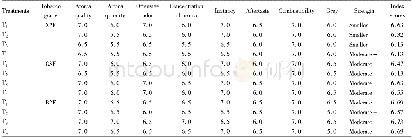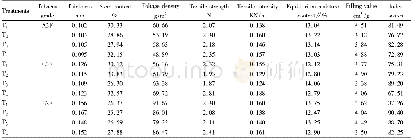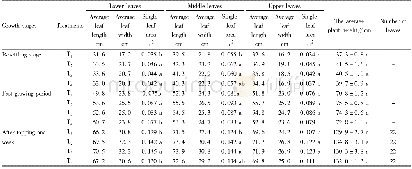《Table 3.Micro-analyses of titanium-bearing slag with differ-ent smelting times》
 提示:宽带有限、当前游客访问压缩模式
提示:宽带有限、当前游客访问压缩模式
本系列图表出处文件名:随高清版一同展现
《Effects of smelting parameters on the slag/metal separation behaviors of Hongge vanadium-bearing titanomagnetite metallized pellets obtained from the gas-based direct reduction process》
As shown in Table 1,more than 90wt%of Fe in HVTMP was reduced to the metallic iron.Because the metallized pellets melt relatively quickly and the smelting reduction of iron oxides by carbon is more easily performed than that of vanadium oxides and chromium oxides in HVTMP[7],the recovery of Fe in pig iron can reach a high level within a short time.Certainly,the further reduction of iron oxides and polymerizations of metallic iron can improve the recovery of Fe.Efficiently recovering V and Cr in pig iron requires a long time to form a good dynamic slag–metal interface and further provides the proper conditions for the smelting separations.When the smelting time is extended,it contributes to the sufficient reductions of vanadium oxides and chromium oxides by carbon and adequate enrichments of V and Cr in pig iron.Accordingly,the recoveries of V and Cr can be high.However,when the smelting time continuously increases,the smelting reduction of titanium oxides in slag advances and the recovery of Ti O2 in slag decreases.In addition,with the long smelting time,the formations of Ti C in slag are further improved.The excessive Ti C relatively deteriorates the slag/metal separation,which decreases the recovery of Fe.Given the recovery indices of various elements and the Ti O2 grade in slag,the proper smelting time of HVTMP is 30–50 min.
| 图表编号 | XD002870500 严禁用于非法目的 |
|---|---|
| 绘制时间 | 2018.06.01 |
| 作者 | Cong Feng、Man-sheng Chu、Jue Tang、Zheng-gen Liu |
| 绘制单位 | School of Metallurgy, Northeastern University、School of Metallurgy, Northeastern University、School of Metallurgy, Northeastern University、School of Metallurgy, Northeastern University |
| 更多格式 | 高清、无水印(增值服务) |





